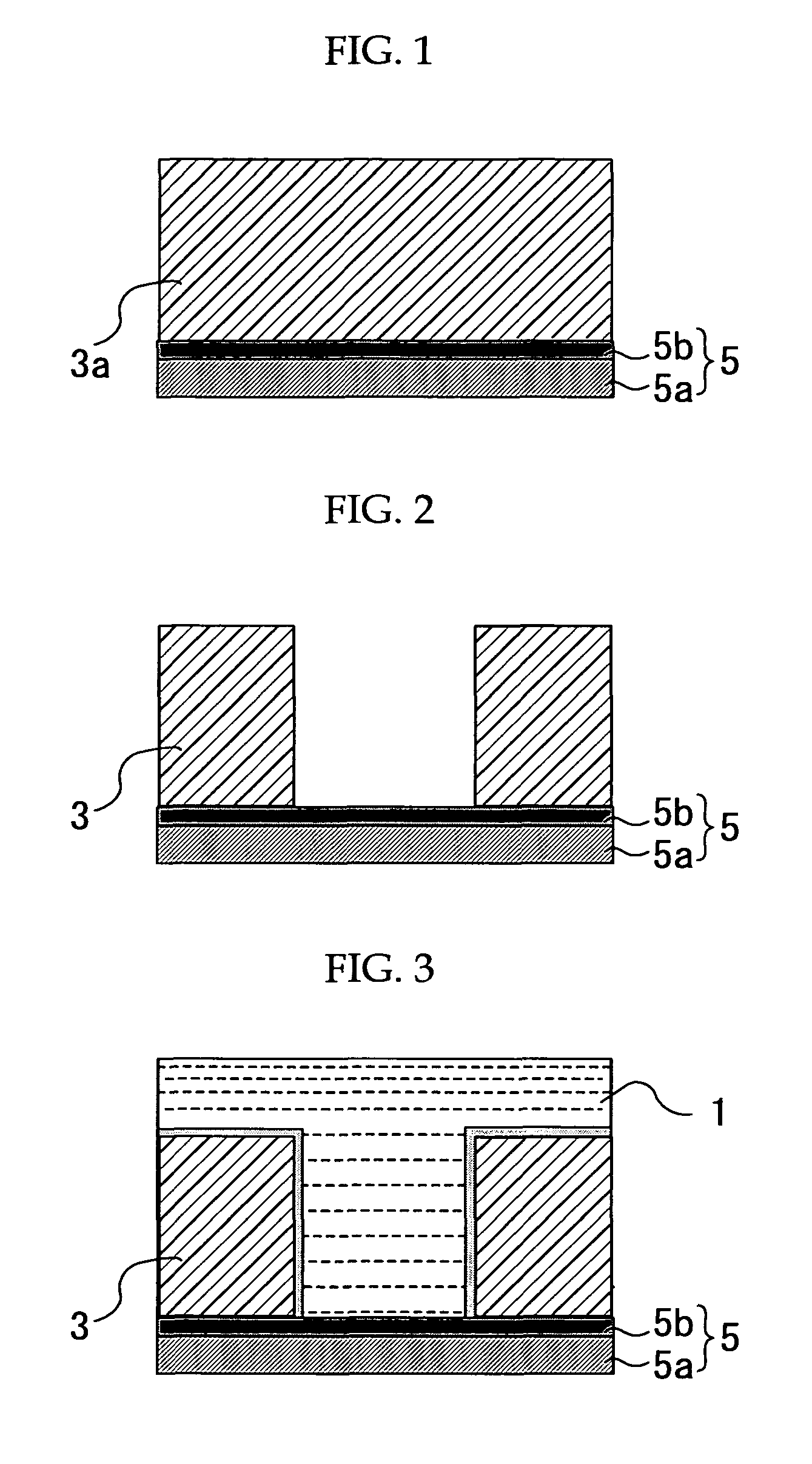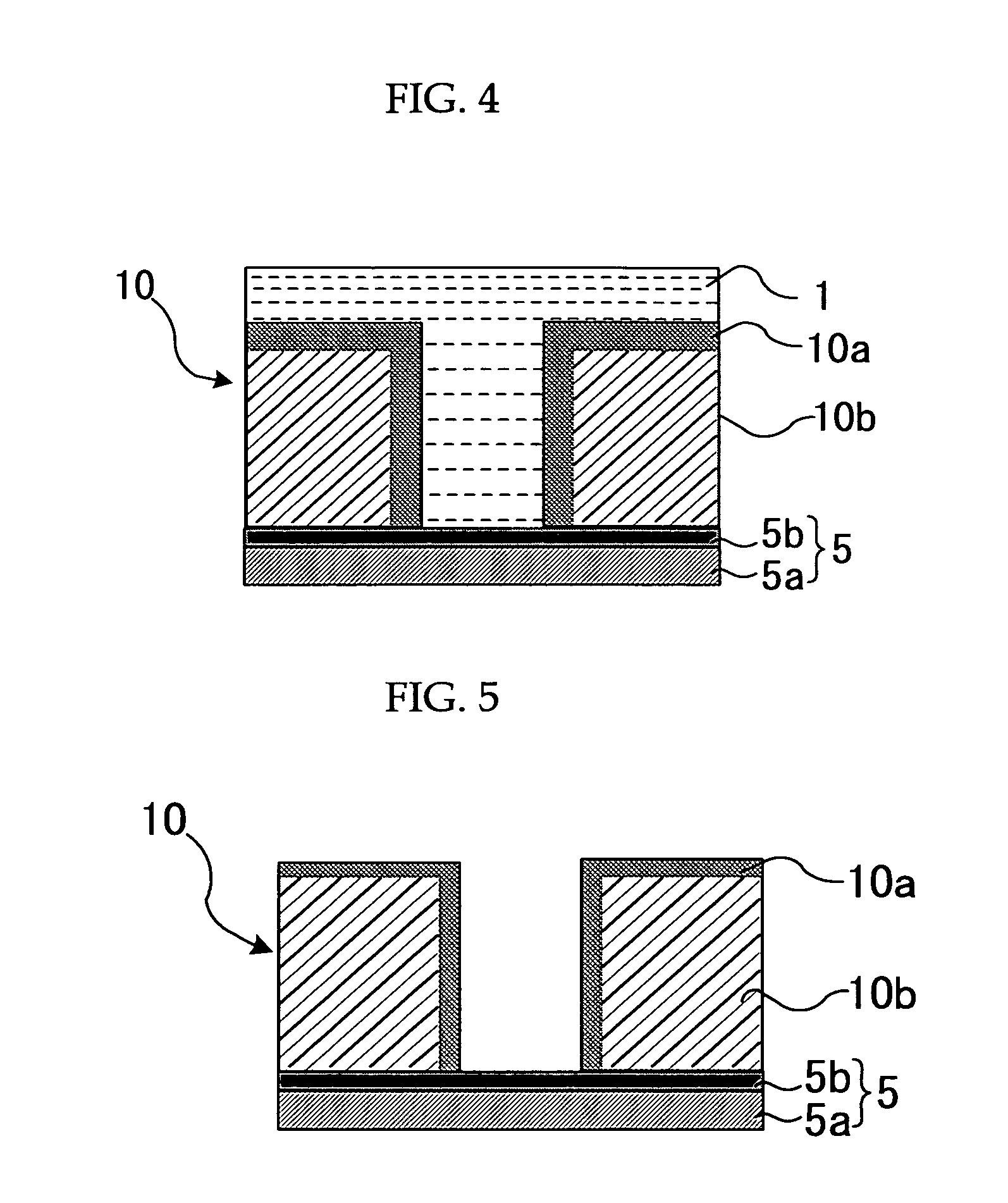Method for manufacturing semiconductor device
a manufacturing method and semiconductor technology, applied in semiconductor devices, semiconductor/solid-state device details, electrical devices, etc., can solve the problems of limiting the use of larger srafs, poor device quality, and burden on mask manufacture and defect inspection, so as to achieve high dimension precision, high quality, and efficient manufacturing
- Summary
- Abstract
- Description
- Claims
- Application Information
AI Technical Summary
Benefits of technology
Problems solved by technology
Method used
Image
Examples
example 1
[0206]Using a halftone phase shift mask as a photomask, a resist pattern was formed and thickened in the manner described below.
[0207]As shown in FIG. 6A, an antireflection film 21 formed of a metal thin film was formed on a semiconductor substrate 20, and an ArF resist 22 (“ARF1244J” made by JSR) was applied over the antireflection film 21, or a work surface. As shown in FIG. 6B, a halftone phase shift mask (reticle) 30 with a seal ring pattern 30A (design pattern) was then irradiated with light (ArF excimer laser light) 23, and the light passing through the reticle 30 was collected by a projection lens 24, exposing the ArF resist 22 followed by development. In this way a seal ring resist pattern—a ¼ scale image of the sealing pattern 30A in the reticle 30—was printed on the ArF resist 22. The resultant resist pattern 31 is shown in FIG. 6C. As shown in FIG. 6C, side lobes S were formed in areas other than the primary feature 31A.
—Preparation of Resist Pattern Thickening Material—
[...
PUM
 Login to View More
Login to View More Abstract
Description
Claims
Application Information
 Login to View More
Login to View More - R&D
- Intellectual Property
- Life Sciences
- Materials
- Tech Scout
- Unparalleled Data Quality
- Higher Quality Content
- 60% Fewer Hallucinations
Browse by: Latest US Patents, China's latest patents, Technical Efficacy Thesaurus, Application Domain, Technology Topic, Popular Technical Reports.
© 2025 PatSnap. All rights reserved.Legal|Privacy policy|Modern Slavery Act Transparency Statement|Sitemap|About US| Contact US: help@patsnap.com



